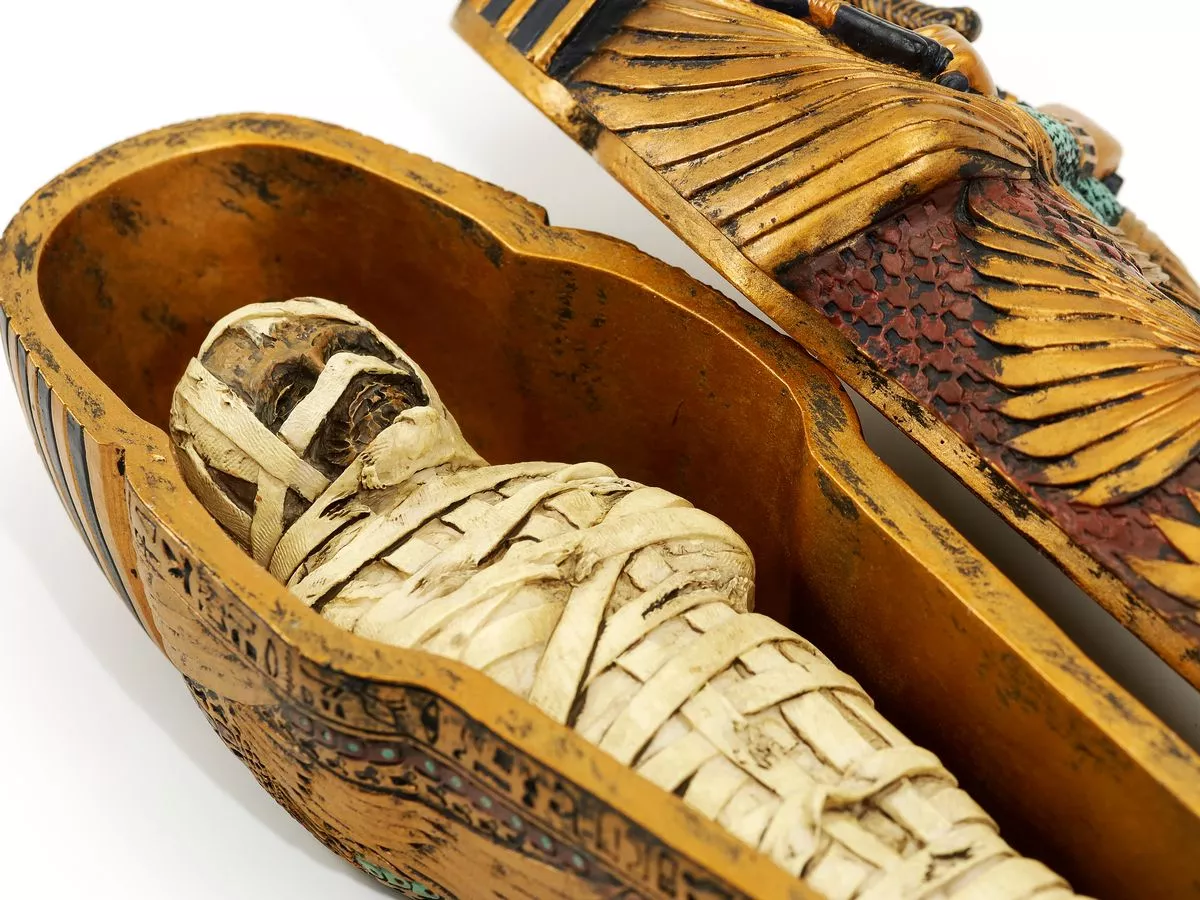By Ambarish Awale Kirsty McKenzie
In the depths of a storage room at Glasgow’s Burrell Collection lie two ancient Egyptian mummies. Both are headless, one is in pristine wrappings, while the other has been reduced to a fragile skeleton. Few Glaswegians even know they exist, and fewer still know the tale of how one of them may be the most unwanted mummy in Scottish history. Known once as “Pharaoh’s Daughter”, the 3000-year-old male corpse was never meant to end up in a dusty cupboard in Pollok Park. Its strange journey to Glasgow, however, reads more like a Sherlock Holmes story than a museum inventory. The saga begins in 1748, when James Douglas, a Scottish Earl with a fondness for the unusual, travelled to Egypt and acquired a mummified body. On returning home, he handed it over to the Faculty of Advocates in Edinburgh, a group of rather startled lawyers, for reasons that remain unclear, Glasgow Live reports. Whether it was a gift or a philosophical statement, the mummy was accepted and set up among the books in the library of Parliament House, home to Scotland’s finest legal minds. There it sat for decades, an odd relic among marble busts and legal tomes. By 1884, the mummy was already fading into obscurity. Faculty Treasurer James Balfour Paul wrote that the curiosity “slumbers in a dark corner as calmly as if it were in the tombs at Memphis”. But its afterlife was far from serene. Nicknamed “Pharaoh’s Daughter”, the mummy became part of Faculty tradition. It even held a symbolic seat at the Annual Dinner, where its health was toasted each year. However, not all treated the relic with reverence. According to Faculty lore, members of the Rifle Corps once used the corpse for bayonet practice. At some point, the wrappings were peeled back and the skull was removed, leaving the mummy in a battered and “dilapidated” state. By the early 20th century, efforts began to pass it on. In 1906, and again in 1954, the Faculty tried to donate the mummy to the Royal Scottish Museum . Both times, the offer was declined. The Egyptologists, appalled at its condition, declared it “dilapidated beyond hope of repair” and added with dry finality: “If it is never seen again by mortal eye, I can assure you that neither science, scholarship nor aesthetics will suffer in consequence.” Desperate to be rid of it, adverts were placed in newspapers. But the public didn’t want it, nor did the Corporation Cleansing Department, which ruled that the mummy was technically a human body and could not be disposed of as litter. Without a death certificate, burial was also out of the question. In 1958, The Scotsman ran a story headlined Riddle of the Mummy Nobody Wants, No name, no sex, no admirers . It read: “Even the legal brains which worked above its head cannot solve the disposal problem… “The mummy has lain for years in a gloomy, dusty, neglected corner of the cellars… The mummy without a name, without a sex and virtually without a custodian.” Yet the article sparked international curiosity. Letters poured in from across Europe and Australia, and among them was one from Dr A T Sandison, a radiologist at Glasgow University with an interest in ancient remains. He offered to take the mummy into his care, and the Faculty, no doubt relieved, accepted. After 210 years in Edinburgh , the mummy was sent to Glasgow in August 1958. When Dr Sandison died roughly 25 years later, his antiquities were donated to the Burrell Collection. Since then, the mummy’s trail went cold. Last year, a librarian from the Faculty of Advocates reached out to the Burrell Collection. Staff there confirmed they had received the Sandison collection in 1982 and were aware of two mummies held in locked storage, both headless, one badly decayed. Despite the name “Pharaoh’s Daughter”, the damaged body is confirmed to be male. And according to Faculty librarian Jane Condie, that detail only adds to the intrigue. “I was able to say, with a modicum of certainty, that the tatty auld bag of bones [held at the Burrell Collection] was likely to be the former Faculty Mummy,” she said. “Unfortunately the storage facility was at that time inaccessible so I was unable to visit the Mummy myself. However, I did pass on some information – gleaned from the museum report of 1954 – about the condition of the Faculty Mummy’s wrappings and coffin at that time. This may help The Burrell Collection make a definitive identification once they again have access.”
